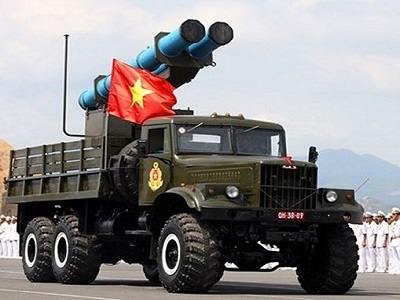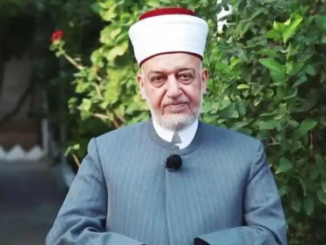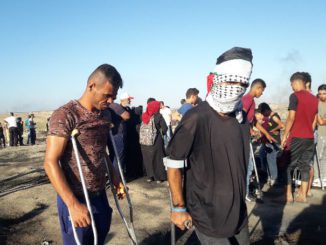
By Ferooze Ali
The arms race amongst the South China Sea (SCS) claimants will be seeing an increase. Reports by IHS Analytics estimated that SCS coastal nations’ collective defense spending could likely jump from $435 billion in 2015 to around $533 billion by 2020. China’s increased assertiveness in the South China Sea has largely sparked this security dilemma. Other claimants may need to develop the capabilities that will allow them to at least defend their territorial claims in the region.
The source of arms imports varies. Though the US may be the leading provider in the region, there are other emerging arms suppliers.
Stockholm International Peace Research Institute (SIPRI) reported that Russia may account for 93 percent of the deliveries to the Southeast Asian nation, which includes eight combat aircrafts, four fast attack crafts and four submarines armed with land-attack missiles.
Interestingly, however, archived web-based reports from 2008 to 2016 suggested that Israel may have already joined the list of arms suppliers to the region. This is worth further deliberation.
In 2014, Philippines news outlet, PhilStar Global, reported the agreement by the Philippines Government to purchase three ELTA air radars from Israel Aerospace Industries worth PH2.6 billion. These will be utilized to monitor naval activities in the South China Sea waters. The following year, in November 2015, Israel Defense reported that the EXTRA (Extended Range Artillery Rocket) missile system had been purchased by the Philippines naval force since early 2015.
Manufactured by Israel Military Industries (IMI systems), the rocket is reported to be highly accurate within a 150km range. The system has been placed within the contested waters of the South China Sea.
In February 2016, SIPRI reports also showed the purchase of 20 of Israel’s EXTRA by Vietnam. The whole system, as reported Reuters by in August 2016, has been moved to 5 bases within Vietnam’s Spratley Islands.
Narrowing this into China-Israel defense cooperation, it is worth knowing that Israel’s sales to China from the late 80s up to the early millennium reached close to SD4billion.
Israel is China’s second-largest foreign supplier of arms (after Russia). China has purchased a broad array of military equipment and technology, including communications satellites.
One of the prime outcomes of Israel-China defense relations is China’s PLA fighter jet Chengdu J10 (Vigorous Dragon). J-10 is reverse engineered after Lavi jet fighter, with the help of Israel’s Aerospace Industries (IAI) engineers. Both fighter jets share many similar avionic elements.
With nearly 240 J-10 aircrafts in active service, the aircraft has been utilized extensively in the South China Sea.
For the record, Israel’s Aerospace Industries (IAI) is owned by the Israeli government through its Ministry of Defense. Shimon Peres, the former President of Israel, founded IAI in 1953.
The same holds for Israel Military Industries Systems (IMI systems), which is fully owned by the Israeli Government through its Ministry of Defense. Production of military equipment is channeled largely to the Israeli Defense Force.
This proxy involvement of the Israeli government in the South China Sea through its military sales raises four areas of concern and perhaps potential discourse in the future:
First and foremost is the provision of weapons by Israel, which has been questioned morally for its military activities. Israel has, for decades, flouted international condemnation and the demand to cease its land-grabbing policies in Palestine.
Secondly, Israel provides weapons to the biggest recipients in the region, which has the audacity to ignore international norms and escalate the SCS conflict – China. This country has benefited much from IAI’s Lavi to J-10 technology transfer efforts and, ever since, has also been operating the aircraft actively in the controversial waters of SCS.
In June this year, two J-10, as reported by Reuters, were involved in an unsafe air manoeuvre with a U.S. Air Force RC-135 reconnaissance plane over the East China Sea.
The third factor that needs to be considered is the moral and humanitarian issue. What is the moral stand of other ASEAN countries towards Israel’s indiscriminate use of military technology in the Middle East? As food for thought, the Israeli military technology utilised by certain ASEAN members might possibly be used against innocent women and children in Gaza.
In this context, the ASEAN Secretariat through its ASEAN Intergovernmental Commission on Human Rights needs to raise the issue with the respective members that have and might plan to purchase military technology from Israel.
The fourth, and perhaps a potent factor to contemplate, is the reaction of Muslim countries in the South East Asia region. Malaysia and Indonesia are traditionally the two strongest Israeli critics on the latter’s military policies in the Middle East.
Under these circumstances, what would the hypothetical reaction be once these facts become common knowledge in these respective countries? More specifically, will the use of Israel’s military-enhanced equipment by China assert its already perceived unfair demands in the SCS?
Admittedly, these areas of discourse are still preliminary, and will take years to be widely discussed. Singapore has possessed Israel’s technology for decades and the political reaction to such knowledge has been quiet.
Hence, it largely depends on how grassroots leaders or think-tanks urgently broach the above-mentioned information into political sentiment or a discussion-worthy issue. However, what is worth being reminded of is that when it comes to this stage of complex entwinement of Israel, South China Sea, and Human Rights issue, diplomatic sensitivities should be practiced sparingly by ASEAN.
Not too long ago, in 2012, ASEAN former Secretary-General, Dr. Surin Pitsuwan warned that South China Sea disputes risk becoming the next ‘Palestine of Asia’.
This statement holds some water at this contemporary time and hence deserves a little more attention now.
– Ferooze Ali is a Malaysia-based writer. He contributed this article to PalestineChronicle.com.







